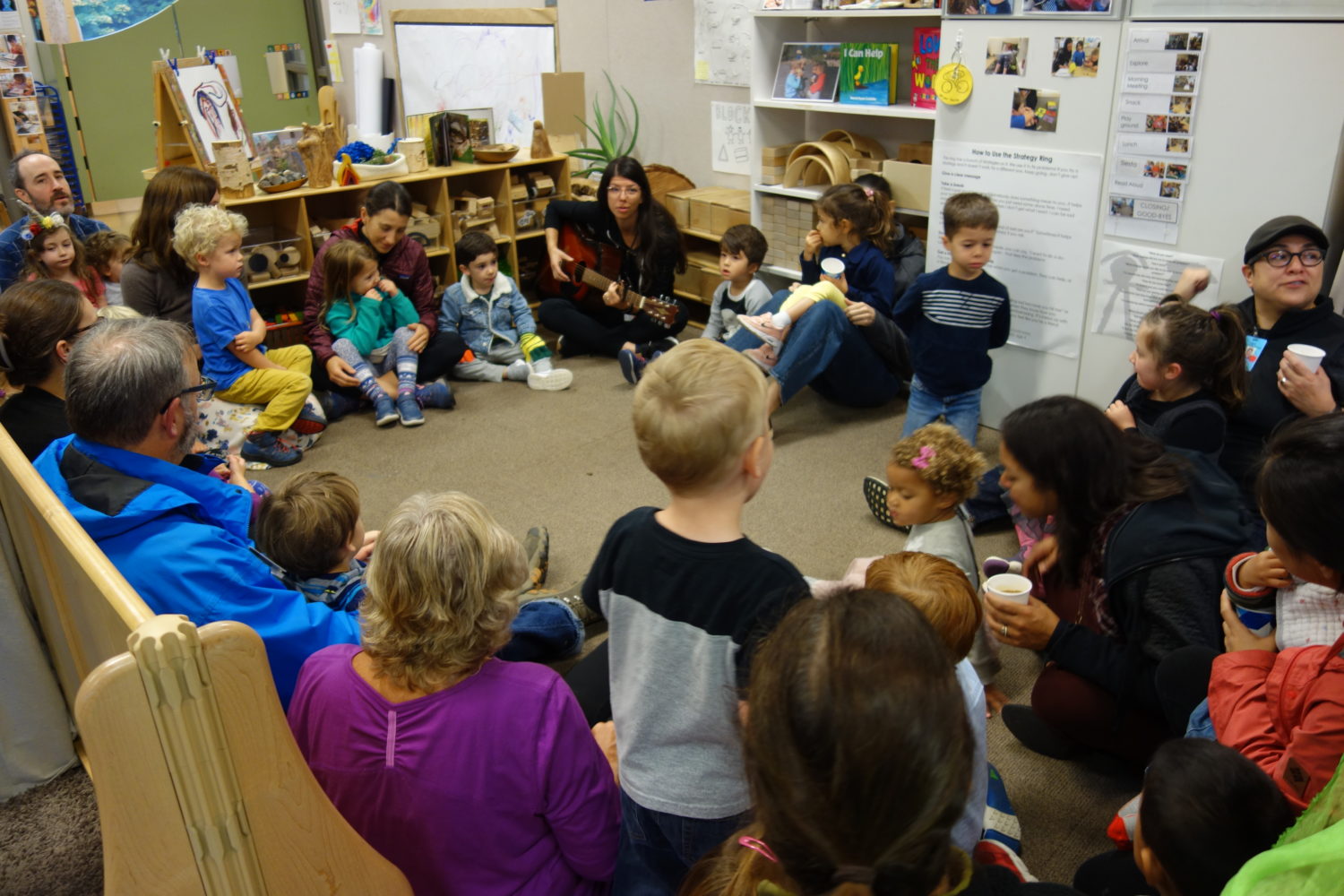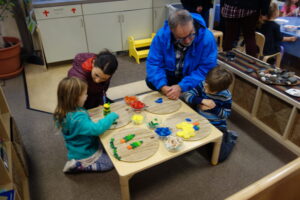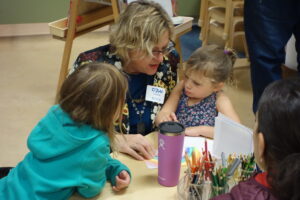Participating Together

One of Opal School’s Values guiding all of our decisions is,
A belief in the rights of children, families and educators to participate together in forming and shaping rich environments of learning, challenge and choice.
I began my 11th year teaching at Opal School this year, so I have spent over a decade practicing this value as an educator. I have pictures and stories that come to mind when I think about the possibilities that live inside of those words. This school year, for the first time, I’m also holding another role within that value—I’m now a parent with a child attending Opal School. Holding this new role has given me what feels like an insider’s peek into that value, and I’m finding some new stories that live within those words.
I’d like to share a couple of small moments and observations that stand out to me and are helping to add new pictures to those words.
At the end of the first week of school, the children in the Alder community of 3-, 4-, and 5-year-olds were sent home with a picture chart that had everyone in the class’ names and photographs on it. My son brought it home and we hung it up on our fridge that day. I was imagining that these images of the children in his class would be a helpful reference point for our family, as our son was meeting so many new people and learning so many new names. And it was helpful in this way. He seems to know almost everyone’s name now (and we do, too.) When he can’t remember, he happily points out who he is talking about.
But this picture chart has also supported our ability to participate in his school life in a way that I hadn’t initially imagined. I’m finding that when I pick him up from school and ask him how his day was (good) or what he did at school (nothing or I don’t know), his responses often leave me wanting more. The more I inquire into the particulars of his day, the quieter he becomes and the harder he tries to distract my attention toward something else. So, although it’s hard for me, I try to back off, and wait for indicators that he’s ready to share. Often, those moments don’t come right when I pick him up from school, but later, when I’m cooking dinner and he’s standing in the kitchen looking at that picture chart. I listen in as he starts pointing to some of the pictures and talking to himself and telling stories about his friends and the things they played at school that day. Having the pictures there brings up memories and stories and ideas, and if I wait, he’ll use those pictures to share with me what’s been going on in his new world at school.
When many individuals are participating together, as the value suggests, there are often many different needs that those individuals bring. This is very apparent in the classroom first thing in the morning as families are on their way to work, or to drop another child off at school, as children say good-bye to families and greet friends, and as teachers greet children and families, share stories, and are eager to begin the day together. When I drop my son off in his classroom in the morning, no matter how long I’ve been there he says, “Stay for just one more minute.” Separation at this time of the day can bring up all kinds of feelings for all of the individuals involved.


In the Cottonwood community of kindergarteners and first-graders, children and families enter the classroom together with an invitation to sign-in by answering some kind of arrival question connected to work the children are doing in other parts of the day. This question often offers connection points for families to hear about or see some of the things the children have been working on and for children to find new connections with the other members of their community. After some time to settle in together, the bell rings and a song begins as a signal to everyone in the space that Morning Meeting is beginning. At this point, families leave the room and children and teachers gather in a circle.
Outside of the classroom, there is an invitation and materials available for families to write notes to their children to leave in their lunchbox. This quick invitation on the way out the door offers another opportunity for connection and adds an element of surprise and delight for the children as they open their lunchboxes later in the day. I have always thought this invitation was a thoughtful way to support that morning transition, but something caught my eye recently that made me think of it in another way. As one of the Cottonwood teachers was bringing in the lunch bin, a note fell out of the lunchbox on top. It was to Adam. His mom had quickly written it on her way out of the classroom that morning.
Her note said:
I love looking at your map. Let’s make more maps at home. Love you.
This note, viewed from my parent lens, helped me see how these small and simple structures support more than just the transition to school: They also began to invite and build connections between the work that was happening in the classroom and the work that is happening at home. This reciprocal relationship between home and school—in the way ideas are shared, brought back, and influence both what we do in the classroom and what we do at home—invites the kind of participation where all players have a voice and feel like they belong. These seemingly small structures and invitations bring to life the words inside that value that give meaning to the children, families, and educators who are working together to live it.
Reader, what seemingly simple structures support your learning community’s values in surprising ways?

Kerry, thank you for sharing your parent perspective of your son’s classroom, as well as a sneak peek into other community structures.
One simple structure we participate in each day is singing a welcoming song at our morning gathering time, which includes singing good morning to each member of our community, and thinking about those who are not with us that day. The children use it to connect to their community, as well as feel a sense of belonging when their name is known and sung by their friends.